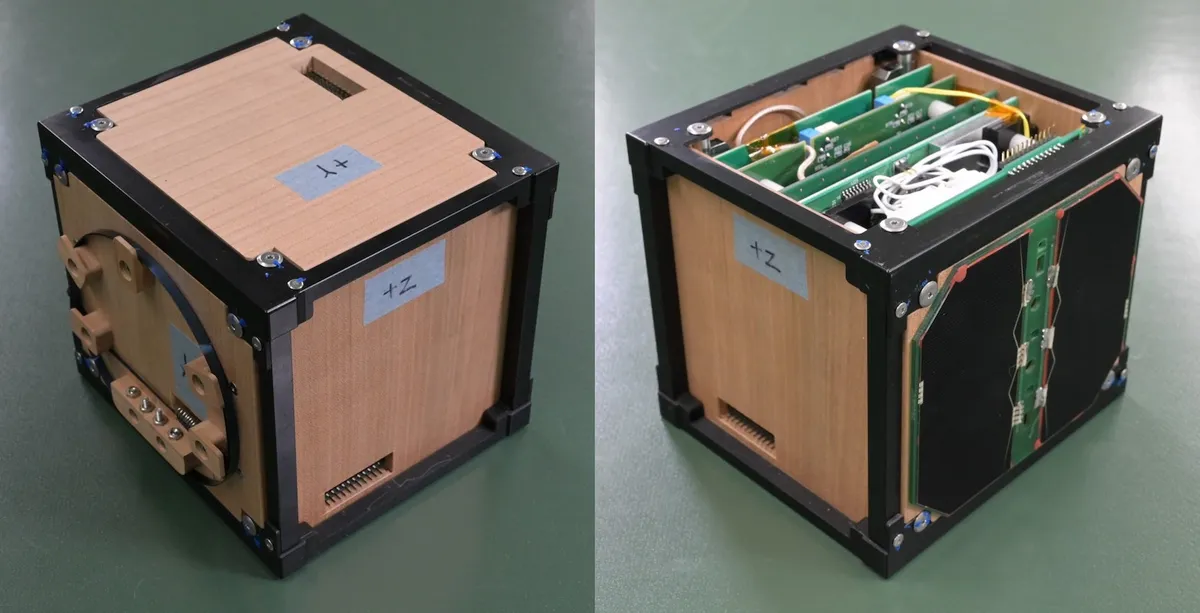In 1957, the first human-made object successfully launched into space was placed in orbit around the Earth. This was Sputnik 1, a beautifully simple, Soviet-made spherical satellite with just four antennas.
But this historic event also marked another, more unsettling first: humanity had left its first piece of space debris in orbit around the Earth.
Part of the 267-tonne, 30m-tall rocket that launched Sputnik was also stuck in orbit. Suddenly the world had a problem that we didn’t know we needed to solve: the littering of outer space.
Thankfully, Sputnik and the piece of rocket it left behind de-orbited and burned up in our atmosphere fairly quickly after launch. That hasn’t always been the case, however – far from it. Over the course of just 66 years of space exploration, a vast amount of detritus has been left in orbit around the Earth.
Now NASA and Japan Aerospace Exploration Agency (JAXA) have an idea to help solve this issue: satellites made from a widely available, biodegradable material – wood.
The current problem with space junk
The problem the agencies aim to address is a big and complex one – and finding out just how big was the first stage of the project. We know that at least 130 million pieces of human-made debris orbit the Earth, most of them whizzing around at over 7km/s – eight times faster than a typical bullet. But though that’s a staggering number, some scientists think it’s a conservative estimate.
Most objects sent into space stay there until they either de-orbit and burn up in re-entry, or are moved away from the Earth and pulled into a graveyard orbit where they’ll circle for hundreds of years. The majority of such objects are actually very small – less than 1cm across – from chips of paint to small bits of electronics and fragments of insulation foam or aluminium.
Such tiny debris can’t be seen from Earth, even with powerful telescopes. So we must look for evidence it leave behind when colliding with other objects in space. This is no easy task.
Work on evaluating the scope of this issue began in earnest after five special objects repeatedly went into orbit and returned home: the NASA Space Shuttles. From 1981, NASA launched a total of 135 shuttle missions.
After each shuttle returned to Earth, it was evaluated with a fine-tooth comb to identify any damage caused by orbiting debris, enabling NASA to get a clearer picture of the problem of small bits of dead satellites flying through space.
Read more:
- This hidden Scottish spaceport is set to launch an explosive new satellite race (if the sheep stay away)
- UK spaceport: the rocket revolution close to home
- Inside the UK's resurrected deep space hub helping astronauts return to the Moon
NASA scientists found exactly what they expected – that small pieces of debris, only millimetres across, could create small but powerful impacts. NASA also produced the first estimates of just how bad the debris environment was becoming.
Earlier, in 1978, NASA scientists Don Kessler and Burton Cour-Palais had proposed a scenario named the Kessler Syndrome. The phenomenon they mooted is a catastrophic chain of events in which when a satellite is splintered by a piece of space junk, the debris created destroys more satellites, producing yet more junk – and so on, in a never-ending cascade.
Clearly, this is a huge issue. So how do we slow the rate of debris creation – or eliminate it altogether? Solutions proposed include de-orbiting spacecraft within five years of launch, using radiation-hard
materials (designed to be less susceptible to damage from exposure to the high levels of radiation and extreme temperatures experienced in space) and launching with reusable rockets.
Enter the idea of wooden satellites. LignoSat, as NASA and JAXA’s project is named, is a coffee-cup- sized (10x10x10cm approx.) wooden box constructed using traditional Japanese joinery techniques to house electronics or other materials required for a space mission – much like current CubeSats.
Wood samples were tested for suitability on the Japanese Experiment Module Kibo of the International Space Station for over 290 days in 2022.
Magnolia performed best, coping well when bombarded with intense cosmic rays and subjected to extreme temperature changes in that harsh environment. It doesn’t burn, rot, crack or deform, and has the critical property of burning up into a fine ash when it re-enters the atmosphere, leaving behind little debris.

Another upside to wooden satellites is their reflectivity – or, rather, lack of it. Currently, reflections from aluminium satellites can be extremely bright, spotted easily by the naked eye from Earth. Crucially, this reflected light can reach sensitive areas and interfere with astronomical observations.
The test launch of the LignoSat is currently pencilled in for 2024. If successful, it could pave the way for further missions.
So will all satellites be made from wood in the near future? Unfortunately, it’s unlikely. On the plus side, projects such as this encourage researchers to think outside the box, and could have more impacts down the line. If LignoSat is successful, more research groups may try implementing biodegradable materials in an effort to curb the creation of more debris.
For now, however, I’m a strong proponent of working to actively track as many objects in orbit around the Earth as possible, to mitigate future collisions with existing material in space.
Read more: